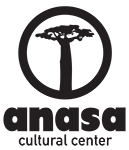“Open Mouths”
A reflection on Les fleurs du mâle Romuald Hazoumè exhibition at Gagosian Athens
by Sophia Xenelli
On March 11th, we attended the opening of Romuald Hazoumè’s exhibition Les fleurs du mâle at Gagosian Athens.
It was a remarkable opportunity for the people of Athens to engage with the radical work of Hazoumè, one of Africa’s foremost contemporary artists and recipient of the prestigious Arnold Bode Prize at documenta 12.
Having read about the artist before entering the gallery, one might expect to learn about life in Porto-Novo, Benin, and the cultural and socio-economic themes that shape Hazoumè’s hometown. And while we did, the experience unexpectedly opened us up to something far more universal.
The presence of the artist in the gallery was of utmost importance, allowing visitors to grasp the full scope of his work and thought. When asked about the masks—assemblages made from recycled plastic containers—Hazoumè revealed a “secret” hidden in plain sight. As the curatorial text informed us, the masks are in fact portraits of people the artist has encountered. What we hadn’t noticed, however, was that all of the containers lacked lids. The containers were open—meaning, metaphorically, the mouths of the people represented were open as well.
As Hazoumè guided us through the portraits, he drew our attention to what he called the “open mouth.” An open mouth, he explained, means speaking out—against injustice, war, exploitation. And of course, doing so comes at a cost. Through both his work and his inspiring words, Hazoumè urged us to keep our mouths open and our voices heard. He spoke not only of his homeland, but also of the crimes in Palestine, of injustices against women, and of the MeToo movement—saying that when one mouth opens, others will follow.
“But what is the connection between the masks and the paintings?” a girl asked.
Hazoumè responded with another eye-opening explanation, revealing the links between the mask-portraits and the symbolic language embedded in the paintings. It turns out the paintings may also contain “open mouths,” hidden in plain view through centuries-old symbols developed by Yoruba-speaking people. These symbols, forms of Fâ—the ancient Yoruba divination system—act as an alternative language, one that transcends time and space. They travel with the artist across the world, carrying a mystical vocabulary that speaks to those willing to listen.
We are deeply grateful to the artist for initiating us into his world, and to the Gagosian Gallery for providing the space and context for such a powerful encounter.
Image credits: Romuald Hazoumè, Afro-dite, 2024. Romuald Hazoumè, ADAGP 2025
Photo: Thomas Lannes
Courtesy of the artist and Gagosian

